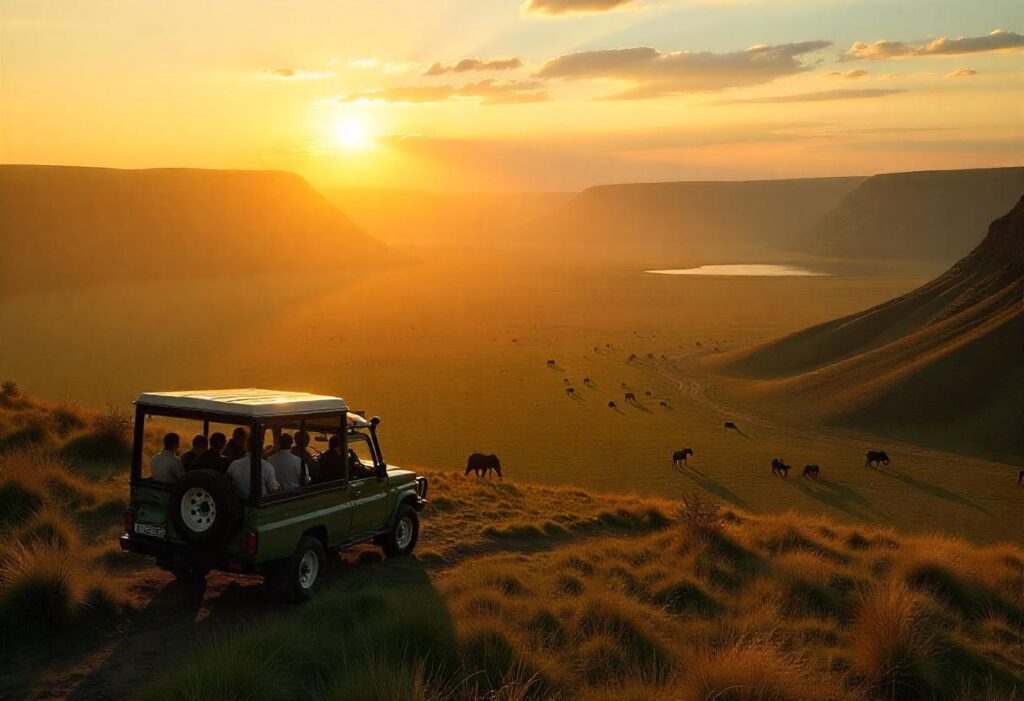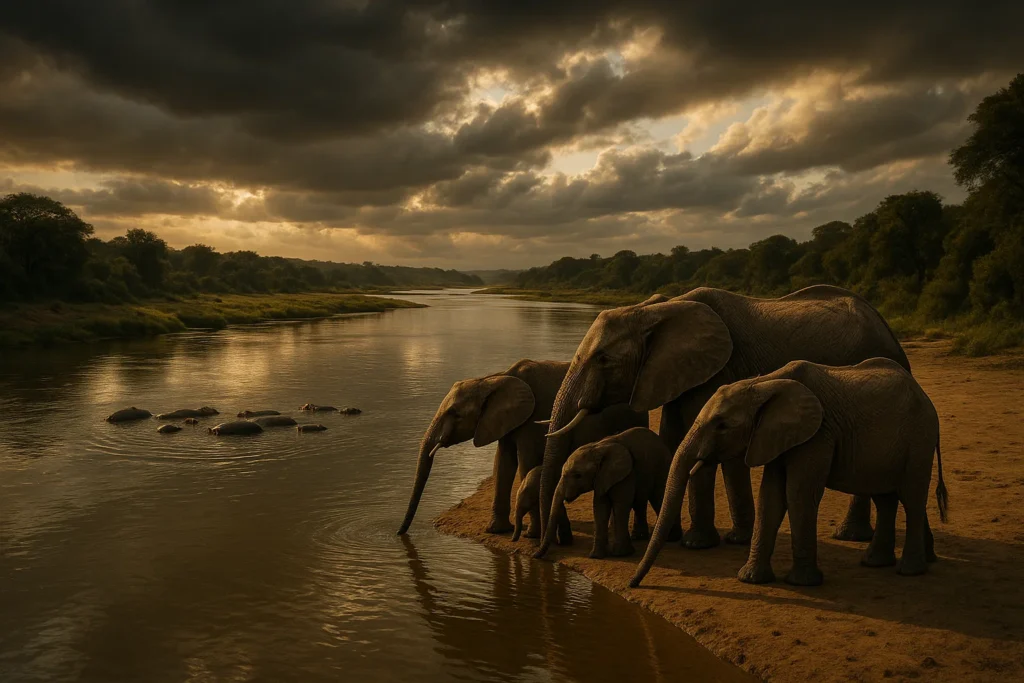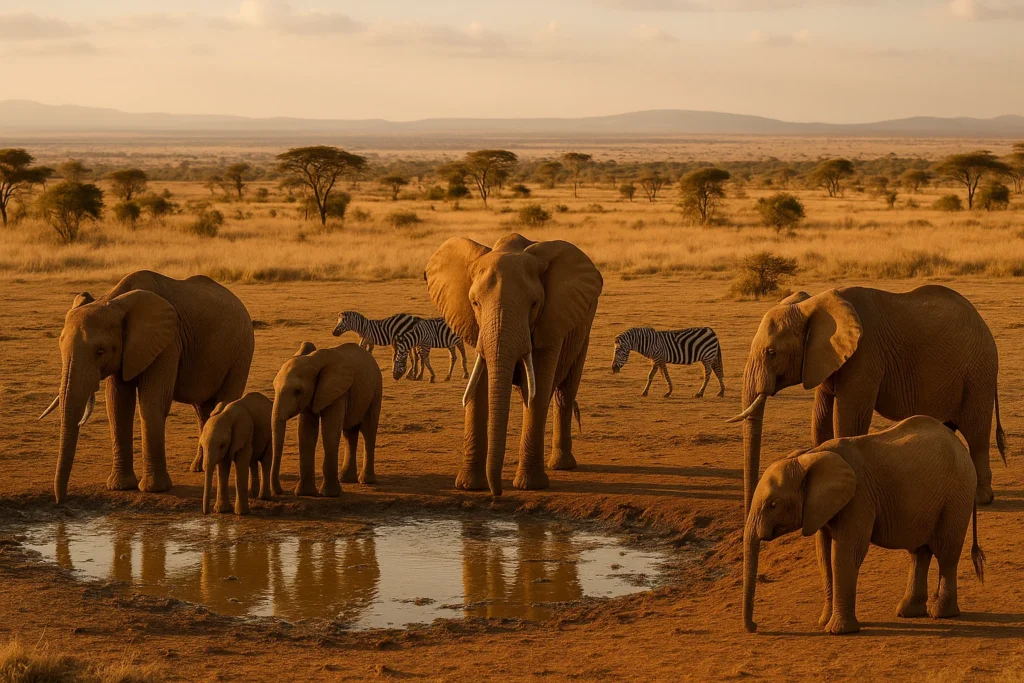Planning a Ngorongoro Crater safari is one of the most rewarding decisions you can make when exploring Africa’s northern circuit. With its dramatic landscapes, abundant wildlife, and year-round game viewing, the crater offers a safari experience unlike any other. Whether you’re drawn by the chance to see the Big Five or looking to combine it with other iconic parks like the Serengeti, this guide will help you make the most of your visit.
Why the Ngorongoro Crater is one of Africa’s most unique safari destinations
Formed over two million years ago by the collapse of a massive volcano, the Ngorongoro Crater is the world’s largest intact caldera and a UNESCO World Heritage Site. Often described as a “natural wildlife sanctuary,” the crater supports an incredibly dense concentration of animals year-round, making it a top-tier destination for safari enthusiasts seeking a dramatic setting and reliable game sightings.
Getting there: How to reach Ngorongoro from Arusha
The Ngorongoro Conservation Area is located in northern Tanzania, about 170 km from Arusha, the main safari gateway. The drive typically takes 3–4 hours and is often included in northern circuit itineraries alongside Serengeti National Park, Tarangire, and Lake Manyara.
Daily flights operate between Arusha and nearby Lake Manyara Airstrip, with transfers to Ngorongoro by road. Most travelers arrive via guided safari tours that handle all logistics.
What wildlife can you expect to see?
A Ngorongoro Crater safari offers one of the best chances in Africa to spot the Big Five—especially black rhinos, which are rare elsewhere. Other highlights include:
- Massive prides of lions
- Large herds of wildebeest, zebras, and buffalos
- Elephants (mostly bulls with large tusks)
- Spotted hyenas and jackals
- Flamingos on Lake Magadi (seasonal)
- Servals, hippos, and a variety of antelopes
While cheetahs and leopards are present, they’re less frequently seen inside the crater.
Best time to visit Ngorongoro
You can visit the crater year-round, but here’s how the seasons affect the experience:
Dry season (June to October)
- Best wildlife visibility
- Fewer mosquitoes
- Cooler temperatures
- Most popular (and busiest) period
Green season (November to March)
- Lush scenery and fewer crowds
- Birdwatching paradise with migratory species
- Lower accommodation rates
- Some tracks may be muddy, but game viewing remains strong
April and May mark the long rains—travel is still possible but less common.
Safari logistics: Entry fees, schedules, and permits
A Ngorongoro Crater game drive is usually limited to six hours, and park rules require descending into the crater only once per day. Key details:
- Entry fee: ~$70 USD per adult per 24 hours (plus VAT)
- Crater service fee: ~$250 per vehicle per day
- Gate hours: 6:00 AM – 6:00 PM
- Permits: Usually arranged by your tour operator
Tip: Start early. Morning drives (starting around 6:30 AM) offer cooler temperatures and active wildlife.
Where to stay: Top lodges inside and around the crater
Lodges on the rim (premium views)
- Ngorongoro Crater Lodge – ultra-luxury, panoramic views, all-inclusive
- Ngorongoro Serena Safari Lodge – upscale, great for couples or families
- Ngorongoro Sopa Lodge – best location for sunrise crater access
Lodges outside the conservation area (budget to mid-range)
- Tloma Lodge – charming garden setting in Karatu
- Rhino Lodge – affordable, closer to the crater rim
- The Retreat at Ngorongoro – mid-range comfort and good dining
Note: Staying outside the crater may require a longer morning drive to the descent gate, but offers better value for budget-conscious travelers.
How to combine Ngorongoro with other parks
A classic northern Tanzania itinerary includes:
- Tarangire National Park – elephant sightings and baobab trees
- Lake Manyara – birdlife and tree-climbing lions
- Ngorongoro Crater – Big Five and unique landscape
- Serengeti – wildebeest migration and endless plains
This circuit typically spans 7 to 10 days and balances scenery, wildlife variety, and travel pacing.
Final tips for your Ngorongoro Crater safari
- Dress in layers: Mornings are cold; afternoons warm.
- Bring binoculars: Especially helpful for distant rhinos.
- Pack snacks and water: Stops inside the crater are limited.
- Expect crowds: It’s popular—go early and manage expectations.
- Respect park rules: No off-roading, no getting out of the vehicle.
FAQs
Yes. The crater offers a compact, high-density wildlife experience that contrasts beautifully with Serengeti’s vast plains.
Technically yes, but it’s strongly recommended to go with a licensed guide for safety and logistics.
The area is at high altitude and considered lower-risk, but anti-malarials are still recommended. Always consult a travel clinic.
Temperatures can drop to 5–10°C (41–50°F) at night. Lodges usually provide heaters or hot water bottles.
Absolutely. Many travelers fly from the Serengeti or Arusha to Zanzibar for a beach extension.






